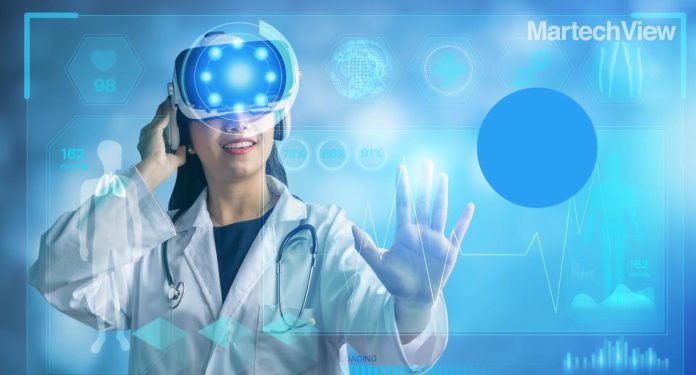Know the key considerations to efficiently explore the multidimensional world of technology and enhance HCP messaging strategy.
As the digital world continues to evolve, technology has allowed marketers across industries to go beyond ‘cookie-cutter’ messaging and tailor their messaging to the specific needs and specialities of their target audience.
With the help of advanced data analytics and AI-driven tools, marketers can create campaigns that are tailored to a specific demographic, behavior, ethnicity or preference that a brand is trying to reach. This level of precision allows a campaign’s messaging to resonate deeply with the target audience.
As the success of any campaign depends on its ability to ignite engagement, it is more critical than ever to harness the power of the digital in the cyber-first age and understand the key role of healthcare cost-consumers (HCPs) and patients in a marketing campaign to make it successful, worldwide.
There is no doubt that ‘life sciences’ industry, just like the others, has seen tremendous transformative growth and innovation in recent years. Communications powered by technology has made it easier and more efficient for companies to have quality interactions with healthcare professionals, resulting in successful business results.
In this new ‘traditional’ to ‘mainstream’ marketing landscape, the primary need of life sciences stakeholders is– driving marketing decisions. With patients becoming more aware of their role as healthcare consumers and more involved in taking, healthcare marketers are also experimenting and analysing patient datasets to create strategies and processes that capture the attention of HCPs and empower them to provide the treatment needed for a patient’s recovery.
Here are some key considerations to efficiently explore the multidimensional world of tech and enhance HCP messaging strategy.
Fostering HCP Engagement in Life Sciences
It goes without saying that HCP engagement plays a critical role in the success of any healthcare marketing campaign. As life science companies evolve their commercial models of HCP engagement, they are building access and relationships as part of a larger commercial strategy.
With the abundance of social media handles and websites, telehealth platforms and apps, EHRs, and other digital media, HCPs are able to provide their patients with better care and treatment than ever before. The only reason this has happened is because of the digital communications that have made it possible for pharma sales representatives to have real-time meetings with HCPs.
With the unique combination of digital creative ads, personalized messaging, and the ability to track relevant healthcare professionals, Rx drug marketers are now able to demonstrate their drug live to them just by using a digital channel. HCPs are also using digital media to extract important health-related information, as well as personal learning.
AI- Powered Personalization in Messaging
Ensuring quality medical treatment for HCPs comes with a lot of pre-requisites. With HCPs enrolled with point-of-care platforms to ensure uniformity and convenience, it is paramount for life sciences marketers to acknowledge that engaging physicians through channels and time of their preference with messaging relevant to the individual customer is a crucial parameter to make their omnichannel marketing initiatives a success.
This precision targeting is only possible through adequate utilization of data-driven research to glean valuable insights about audience behaviour, specializations of HCPs, geographical locations that are their prime target, digital channels that are more preferred by HCPs, along with different needs that can be catered to make HCP engagement a digitally coherent apparatus.
For instance, Virtual Reality and augmented reality technologies available today has produced immersive medical experiences for healthcare professionals. The companies here can develop virtual simulations of medical procedures, medical training modules, or AR apps that offer real-time information of the product during the detailing visits. In coming years, point-of-care marketing initiatives are expected to take up a higher chunk of Direct-To-Consumer (DTC) marketing expenses.
Utilize Patient-Centric Approach
It’s important to remember that the primary goal of a marketing campaign is to help HCPs provide quality care to patients. Life sciences that frame their strategy from a patient’s perspective have a higher chance of achieving a recall value.
Unlike consumers, purchases in life sciences aren’t made impulsively. They’re made after careful consideration, research and decision-making. In a world where drug sales are heavily influenced by outside factors, it’s essential to empower patients with information that can help them make better decisions about their health. Engaging key opinion leaders (IOLs) and medical professionals in the creation and dissemination of these findings increases credibility and relevance to your targeted HCP and patients.
Create Effectual Pharmaceutical Digital Ads
The core agenda of any healthcare marketing campaign is to transmit intricate scientific concepts and benefit statement to multiple stakeholders, including healthcare professionals; patients; and regulators, all while adhering to company’s compliance. Also labelled as ‘Direct-To-Consumer’, the content showcased in such ads usually includes details about a drug’s use, its potential benefits, along with how the medication works to improve a specific disease.
By directly reaching out to HCPs through such informative and creative ads, organizations would be able to successfully attain brand recognition and assist HCP make well-thought decisions while prescribing a specific drug to a patient. The core agenda of any healthcare marketing campaign is to transmit intricate scientific concepts and benefit statement to multiple stakeholders, including healthcare professionals; patients; and regulators, all while adhering to company’s compliance.
Why India’s Life Sciences Ecosystem Needs Reorientation
In recent years, India has attained significant progress in leveraging technological advancements with over 8000 HealthTech startups in India in 2023. Knowing the population size of the country, possibilities of leveraging and obtaining insights from the vast datasets available is immeasurable. While the consumer markets of India have extensively utilized digital resources for their marketing initiatives, the life sciences industry still lags in adoption of the digital.
A massive challenge as well as opportunity indeed lies in the multifaceted nature of data. By carefully studying details pertaining to patient medical history, prescriptions, diagnostic details, among others, Rx drug marketers can secure huge amount of healthcare costs in India. This change can help create a digitally conducive life sciences marketing ecosystem.
To encapsulate it all, the future for life sciences marketing lies in an insight driven, responsive model that intelligently coordinates between HCPs and life sciences to offer strong linkages between brand strategy and promotional execution.










